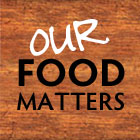
Goshen working on a raw recreational bone
As we enjoyed our meat, we were watching the deeply focused Goshen working on her bone and we started to discuss the diet of a dog. A dog is a sub-species of the wolf and the digestive system in a dog has not changed noticeably from its wild ancestor. A wolf is a predator, who eats muscle meat, some internal organs and bone, and it eats it raw. So, why do we not feed our dogs like that? Well, as with so many other things it is all about convenience and money. Convenience, because it is easier to scoop up a bowl of dry kibble to the dog every day and you don't have to handle fresh products. You don't need to think much. Money on the other hand, is not, as you might think, primarily about kibble being more cheap. As long as you develop a good relation to a butcher, you can feed your dog raw food to less than the price of any kibble. The money aspect is instead about the multi-billion dollar dog-food industry, which in many ways can be compared to the pharmaceutical industry - with its sometimes questionable objectives.
Commercial dog food primarily consists of grains and vegetable products, while the protein source might be animal by-products from what is referred to as 4D-meat, or dead, dying, diseased and disabled. I presume that I do not have to develop that further to get my point through. I will not argue that all commercial dog food is made from the lowest quality animal protein, but anything far away from a chunk of meat with a bone inside, cannot be considered natural food for a predator. Not only do the pet food industry seduce you with misleading advertising, they also take help from the one person most pet owners trust the most, their vet. Just as physicians are corrupted by the pharmaceutical industry, in the same way dog-food producers "buy off" the vets to promote their feed. And what would the vets do if all dogs were healthy enough to reduce the visits to the vet to merely going there to get a microchip when it is a puppy? See the pattern?
If you look at the poo from a dog that is kept on kibble, they drop huge piles, while a dog kept on raw animal food will leave tiny, dry pieces that most closely resembles dry fox poo. One who can do the math then realises that the bioavailability of many of the ingredients in the kibble leaves more to wish for.
Anyhow, we started to search for some information about raw dog food, and first we stumbled over BARF (Biologically Appropriate Raw Food or Bones And Raw Food). BARF promotes 60-80% raw meat and bones and 20-40% fruits and vegetables. They claim that dogs are omnivores and that they therefore need the vegetables and other supplements. This is based on the early domesticated dogs who scavenged whatever was available around the human camp, but according to me, this says more about the presence (or lack) of proper food than the dogs preferences. The BARF people also commonly mash the meat together with the vegetables and other supplements and serve the dog these "burgers", and as far as I know there is no one that grinds the meat for the wolfs in the wild. I realised that this strategy is more of a compromise than a complete return to basics and since I did not feel satisfied enough, I had to move on.
Then I discovered the prey model diet. Now things started to become interesting because this model actually tries to mimic the diet of a wild dog, including the proportions of the different parts of the prey animal, i.e. organs, muscle meat, bone, skin and blood, but also whole eggs and small amounts of fur, scales and feathers. In short-hand this means whole (or parts) of animals that the dog has to work on with its teeth, and the effect that this has on the teeth hygiene is self-evident. To get a balanced diet these raw-feeders try to supply a wide variety of prey animals to their dogs, and to feed fish on a regular basis to compensate for the reduced amount of omega-3 fatty acid in commercially raised grain-fed livestock. According to this theory, the only vegetable source a dog needs is a fresh lawn of green grass for the dog to take a few straws now and then to help remove indigestible bone fragments from the gastrointestinal tract. I found a few useful information sources about raw feeding, as well as some fascinating myth-busting and a very active mail group, so besides educating us more, we are about to see what kind of deal we can make with Samir. He breeds the animals himself, so with him there is an unbroken line from the live animal to the customer, which is very satisfying. He breeds beef cattle, lamb and chicken and if he agrees to provide us with both meaty bones and organs from the different animals, then we have everything covered except a fish of some kind once a week. Will we get from theory to practice..?
And just for your information, this post might appear very contradictory to the last post in where I presented a picture of Goshen chewing on a carrot. That whole thing was more of a joke than actual practice. We do not feed her vegetables (other than the vegetables in the commercial kibble she unfortunately still is on). She is after all a dog and not a rabbit.






No comments:
Post a Comment